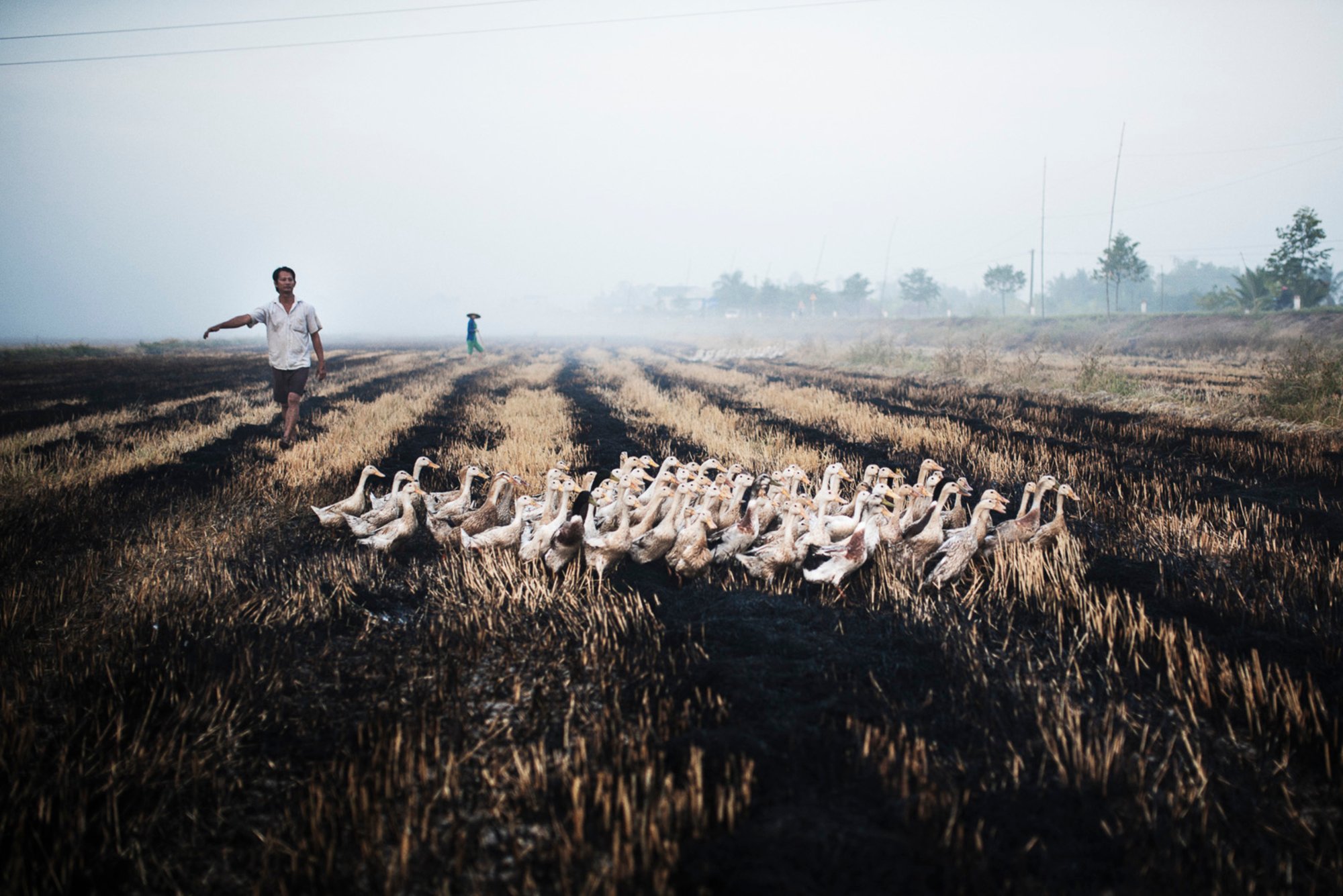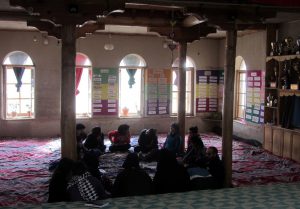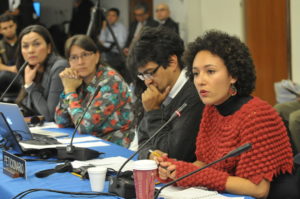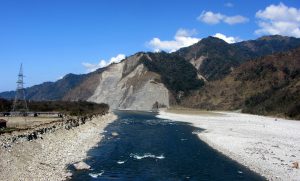The Mekong Delta is often referred to as the rice bowl of Vietnam, which in turn is one of Southeast Asia’s largest agricultural exporters.
In order to maintain such high levels of productivity, farmers have started to plant a third annual yield for their rice crops. This practice means that nutrients that used to return naturally to the soil between the two traditional crops no longer have a chance to, so farmers have turned to chemicals. They are also planting larger fields for bigger yields of other crops, with mass production of livestock and fish farming at close quarters.
Farmers in Vietnam have invested heavily in pesticides, herbicides, insecticides, antibiotics, and other agrochemicals to meet their production demands. Yet, while these agrochemicals and pesticides ensure reliable yields, they are making their way into the region’s water table, into the Mekong River and eventually into the ocean via Vietnam’s extensive network of irrigation canals.
Traces of these products are also being found in food produced in Vietnam, be it meat, fish, fruit, vegetables or staples like rice and potatoes.
This is having a terrible effect on the livelihoods and health of those living in the region and throughout Vietnam, and wreaking havoc on the natural environment.
Increased cases of food poisoning and cancer are rampant throughout Vietnam with official statistics showing that contaminated food is responsible for at least 35% of new hospital cases.
This biggest concern is that Vietnam’s consumption and use of agrochemicals is actually on the rise, with around 100,000 tonnes of chemicals imported annually, mainly from China. This begs the question: What price is Vietnam willing to pay to produce more food?
A farmer corrals a flock of ducks in a field outside Can Tho in Vietnam’s Mekong Delta. With animals or fish living in high concentrations, routine use of antibiotic drugs is carried out to prevent infection and disease. (Image: Gareth Bright)
Roughly 2,000 ducks wait to be injected with antibiotics on a farm outside Can Tho. All the steroids, hormones and antibiotics used end up directly in much of Vietnam’s food and exports. (Image: Gareth Bright)
A duck is injected with antibiotics. (Image: Gareth Bright)
An aerial view of the Mekong Delta shows the complex irrigation system that feeds the agricultural sector. The Mekong Delta is often referred to as the rice bowl of Vietnam, which in turn is one of Southeast Asia’s largest agricultural exporters. (Image: Gareth Bright)
A farm worker prepares a cocktail of agrochemicals to ensure high crop yields. The run-off from these chemicals enters Vietnam’s irrigation network and spreads downstream into the Mekong River. (Image: Gareth Bright)
A farm worker kills the grass that is covering potentially productive agricultural land. Vietnam is one of Southeast Asia’s largest exporters of agricultural products, and farmers often use heavy quantities of agrochemicals to ensure high crop yields. (Image: Gareth Bright)
A group of farmers laugh and explain that they do not eat the food they grow to sell, that they in fact have a separate crop for their families that are not grown with the use of agrochemicals. (Image: Gareth Bright)
A farming family gathers in a field at the end of a hard day’s work. Their livelihood depends on the success of their crops. They cannot afford to take the risk of a failed crop so use agrochemicals. (Image: Gareth Bright)
A female seller in a market in Can Tho makes sure her produce looks clean and fresh. Not only was it grown using agrochemicals, it will be sprayed with water that is almost certainly contaminated by the agrochemical run-off that has made its way into the region’s water table. (Image: Gareth Bright)
A worker at a coconut husk factory spreads husks out in the sun to dry. They will be exported for soundproofing, insulation and for plant holders in the form of a mulch to grow flowers in. Coconuts are one of the few crops that do not need agrochemicals to ensure their growth. (Image: Gareth Bright)
A man attempts to fish in a canal near a productive rice growing area near Can Tho. “There used to be many fish and clean water here, now there are sick fish and bad water.” (Image: Gareth Bright)
Fish jump from the water of an aquaculture farm during the afternoon feed. Throughout Vietnam’s Mekong Delta, locals report fewer fish being caught in the river, and some are abandoning the Mekong altogether to build more profitable fish farms further inland. (Image: Gareth Bright)
A view of one of the last protected areas in the Mekong Delta. The water here remains somewhat clean but is at risk unless action is taken to stop the contamination of the Mekong Delta. (Image: Gareth Bright)
This article is republished with minor changes from The Third Pole





















